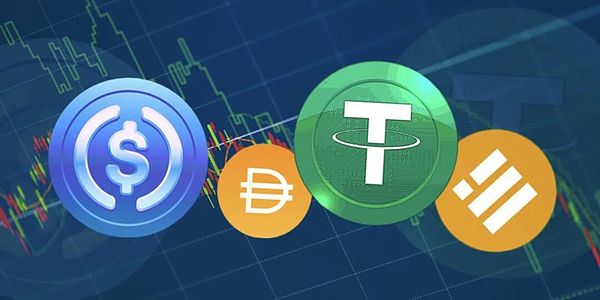The public blockchainization of stablecoins is driving the industry's transition from "value attachment" to "value capture." This trend stems from issuers' competition for control of underlying infrastructure and the restructuring of transaction value distribution. The following analysis focuses on four dimensions: core drivers, technological path, competitive landscape, and future impact: 1. Core Drivers of Value Capture: From "Traffic Gain" to "Rule-Making." Redistribution of Transaction Fees: When traditional stablecoins are based on public blockchains like Ethereum and Tron, transaction fees are completely captured by the underlying networks. For example, USDT processes over $1 trillion in transactions per month on the Tron network, with each transfer incurring a $3-6 fee, all of which goes to Tron. If Circle operated on Ethereum at the same transaction volume as USDT, it would lose billions of dollars in fees annually. After building their own public chains, issuers pay gas fees with native stablecoins (such as Circle Arc's USDC and Tether Stable's USDT), directly capturing transaction value. Tether's Plasma chain even offers zero-fee transfers, completely overturning the existing distribution model. The Struggle for Ecosystem Control: Stablecoins serve as the liquidity cornerstone of the crypto ecosystem, with daily trading volumes often several times that of Bitcoin. By building their own public chains, issuers can integrate payment, lending, cross-chain functionality, and other functions to form a closed-loop ecosystem. For example, Circle Arc features a built-in institutional-grade foreign exchange engine, supporting sub-second transaction finality and directly serving high-net-worth individuals. Tether Stable launched the USDT0 cross-chain token and the gasUSDT fee token, building a complete ecosystem from issuance to application. This dual control of "currency issuance rights + infrastructure" elevates issuers from mere token suppliers to platform-level enterprises. A Dual Breakthrough in Technology and Compliance: Existing public chains have inherent flaws in performance and compliance: Ethereum's high fees and slow speeds, Tron's security concerns, and Solana's lack of stability. Building a private public chain allows for optimized technical architecture tailored to specific scenarios. For example, Stripe's Tempo Chain supports multiple stablecoins as fees and its consensus mechanism achieves sub-second confirmations. Circle Arc's built-in compliance module meets KYC/AML regulatory requirements, attracting traditional financial institutions. Furthermore, Tron has integrated with banking systems through the ISO 20022 financial messaging standard, becoming the first stablecoin protocol to receive EU MiCA certification, further solidifying its compliance advantages. Second, Differentiation of Technology Paths: From "Single Tool" to "Ecosystem" Payment Chain: Efficiency-Prioritized Infrastructure Tempo (Stripe + Paradigm) Tempo does not issue native tokens, paying fees directly in USDC and USDT. It supports complex features like conditional and scheduled payments. Alliance members include giants like OpenAI and Visa, aiming to become a cross-industry infrastructure. Plasma (Tether) is deeply integrated with Bitcoin, allowing users to participate in smart contracts with Bitcoin. USDT transfers are fee-free, positioning it as a "stablecoin version of Alipay" to promote the popularization of everyday payments. Financial Chain: Institution-oriented vertical integration Arc (Circle) USDC serves as a gas fee token, forming a closed value loop. Its built-in foreign exchange engine supports fast multi-currency stablecoin exchanges. Designed specifically for enterprises, it offers asset tokenization and automated settlement tools, earning it the nickname "Wall Street's version of a stablecoin public chain." Stable (Tether) Its dual-chain architecture (mainchain settlement + Plasma parallel chain processing small transactions) uses USDT as both a transaction medium and a fee token. Its StableBFT consensus mechanism addresses high-traffic congestion, aiming to serve hundreds of millions of users worldwide. Hybrid Chains: Balancing Compliance and Innovation Converge (Ethena) Supports algorithmic stablecoins like USDe, offering both open DeFi and compliant financial capabilities. Retail investors can participate in mining, while institutions can conduct regulated digital asset business. Privacy is protected through zero-knowledge proofs.
Google Cloud Unified Ledger
does not directly issue stablecoins, but instead provides banks with the underlying technology for stablecoin issuance and management. By binding with Google Cloud services, it lowers the entry threshold for institutions.
III. Evolution of the competitive landscape: from "traffic war" to "standard game"

Direct confrontation between issuers and public chainsTron once became the "king of payment chains" with USDT's $82 billion in circulation (accounting for 51% of the world's total) and an average daily transfer volume of $20 billion, but after Tether launched the Stable Chain, its zero-fee strategy may divert users. If 50% of USDT trading volume were to shift, Tron would lose hundreds of millions of dollars in annual revenue. Meanwhile, Circle Arc's use of USDC to pay gas fees directly increases USDC demand, potentially weakening USDT's market share. Traditional financial institutions are entering the stablecoin ecosystem through partnerships or by building their own public chains. Deutsche Bank and Standard Chartered have joined the Tempo Alliance to explore cross-border payments; institutions like Franklin Templeton have issued tokenized government bonds, creating asset linkages with public stablecoin chains. Meanwhile, crypto-native asset management firms (such as Gauntlet and Re7), which manage over $4 billion in on-chain capital, are deploying stablecoin strategies through protocols like Morpho, driving the institutionalization of DeFi. The battle for technical standards is heating up. Payment protocols (such as Tempo's multi-stablecoin fees), cross-chain interoperability (such as Tron and THORChain's unwrapped cross-chain), and compliance frameworks (such as MiCA certification) have become key areas of competition. Tether is optimizing network performance through the StableBFT consensus mechanism, while Circle is integrating with banking systems using the ISO 20022 messaging standard in an effort to define industry standards.
Fourth. Future Impact: From "Crypto Revolution" to "Paradigm Shift"

Reconstructing Value DistributionThe public blockchainization of stablecoins will reshape the industry's profit structure: issuers will shift from simply earning interest rate differentials on reserve assets to also earning diversified revenue streams such as transaction fees and ecosystem service fees. For example, Circle captures USDC demand through every transaction on the Arc chain, and Tether expands its profit sources through cross-chain token swaps and enterprise solutions on the Stable chain. This may lead to a shift in the valuation logic of issuers from "money supply multiple" to "platform user value multiple." The Normalization of Regulation and Compliance: Self-built public chains make it easier for stablecoin issuers to meet regulatory requirements, such as Circle Arc's real-time transaction monitoring and Tron's third-party audits. In the future, compliance may become a key barrier to competition among public chains, and non-compliant chains face user loss and legal risks. For example, USDT's encrypted transfer function on the Stable Chain must comply with anti-money laundering regulations; failure to do so may result in regulatory restrictions. Accelerating Technological Innovation: To attract developers and users, public chains must continuously optimize performance and functionality. For example, Tron achieved compatibility with EIPs through the Kant mainnet upgrade, improving smart contract execution efficiency; Solana further reduced transaction latency through parallel processing technology. Furthermore, algorithmic stablecoin public chains (such as Converge) are exploring dynamic collateralization ratios and coordinated regulation of cross-chain liquidity pools, potentially giving rise to more complex financial derivatives. Conclusion The public chainization of stablecoins is the inevitable outcome of the industry's transition from "unbridled growth" to "deep value cultivation." By building their own public chains, issuers not only regain control of transaction value distribution but also build a financial ecosystem centered around stablecoins. This trend will accelerate the integration of cryptocurrencies and traditional finance while also driving the restructuring of technical standards and regulatory frameworks. In the future, public chains that strike a balance between performance, compliance, and ecological stickiness will become the dominant infrastructure in the digital economy era.
 JinseFinance
JinseFinance










